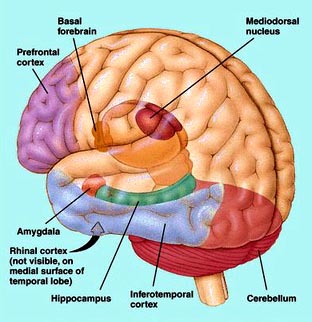On mind – made up of our thoughts, beliefs, and self-talk – doesn’t have an ‘off’ switch. According to scientists, we have about 60,000 thoughts a day, of which 95 percent are the same thoughts we’ve had day after day. For the average person, 80 percent of the habitual thoughts are negative, which equates to 45,000 negative thoughts per day.
Disturbing thoughts and experiences make more intense and lasting impressions on our brain. Psychologist Dr. John Cacioppo, at the University of Chicago, showed subjects in neuropsychological experiments happy, sad and neutral pictures, they will spontaneously respond more strongly to the sad images, as can be read in the strong deflection of the EEG.
When we moved to Chicago 19 years ago, I was 4 months pregnant with Michelle. I started looking for a job immediately because we wanted to buy a house and settle down. Even though Michelle was born eight and a half pounds, I carried small and could easily hide my bump. I was offered a job by a small data research company where everyone was expected to work long hours. At seven months, I knew I had to tell my boss that I needed to be on maternity-leave soon. So I approached his secretary for advice.
“Wow, he’ll be shocked, really shocked. And we are really busy right now … Tell you what, make up a sad story like a previous miscarriage and you had been trying to get pregnant since then. He and his wife love that stuff.”
I thought it was laughable. I couldn’t fabricate something like that. Plus Jane was barely two at the time, so how hard could it be to get pregnant? But she had a point. People prefer tragedy. A heartbreaking drama will move us much more easily than a comedy will make us laugh. We owe this unpleasant quirk to biology. Our ancestors that roamed the jungle had to be alert and fearful at all times in order to avoid being eaten by the saber-toothed tiger.
Although today we don’t have to be on the constant lookout for predators, we are hardwired to experience negative feelings more intensely and readily than positive ones.
If as a professor, you are reading students’ feedback. 99 percent of them are good but one annoying kid said that your class was boring and he didn’t get much out of it. Which is going to stick with you and put you in a sour mood for the rest of the week?
Amygdala is part of our brain’s alarm system that triggers the fight-or-flight response. The almond-shaped amygdala located deep within the medial temporal lobes of the brain in complex vertebrates creates and stores emotional reactions to frightening situations and is considered as the fear center.
Researchers who have studied a woman who suffers from an extremely rare disease that destroyed her amygdala report that she does not seem to fear a wide range of stimuli that would normally frighten most people (e.g. snakes, spiders, horror films, a haunted house, or traumatic experiences in her past). But her inability to avoid perilous circumstances more than once put her life in serious danger. In one case, when she was 30, she approached a drugged out-looking man late one night who pulled a knife and threatened to kill her*. Scientists think it is a miracle that she is still alive.
Therefore fear in small dosage is healthy and good because it keeps us well and alive. However we need to be aware of the 45,000 negative thoughts that run through our mind constantly and figure out ways to tune them out. In fact your amygdala can be tweaked to transform panic reactions into calm ones in the face of fear, anxiety, stress, or frustration encounters. You can learn to bypass your amygdala‘s automatic default operations by consciously cranking up your rational brain (neocortex in the left prefrontal area). It might be briefly satisfactory to yell at a child who left his new jacket on the playground for the fifth time, but the jacket is gone, and even worse, your rage has laid a path for the future. If you choose to respond differently by offering to take your child back to the playground and trace the jacket, you are more likely to react calmly in similar situations in the future. When we change our thinking, which in turn changes behavior, the neural pathways are also altered.
Unhappiness comes on its own, but we have to work for happiness. With awareness and by inclining our mind to positive thoughts and feelings, we can prevent the amygdala hijack in work situations or in private life and make happiness a habit of living.
_______________________________________________________________________
*http://usatoday30.usatoday.com/yourlife/health/medical/2010-12-17-findings-improve-ptsd-treatment_N.htm


I have been examinating out some of your articles and i can state clever stuff. I will make sure to bookmark your site.
April 9, 2014 @ 11:54 pm